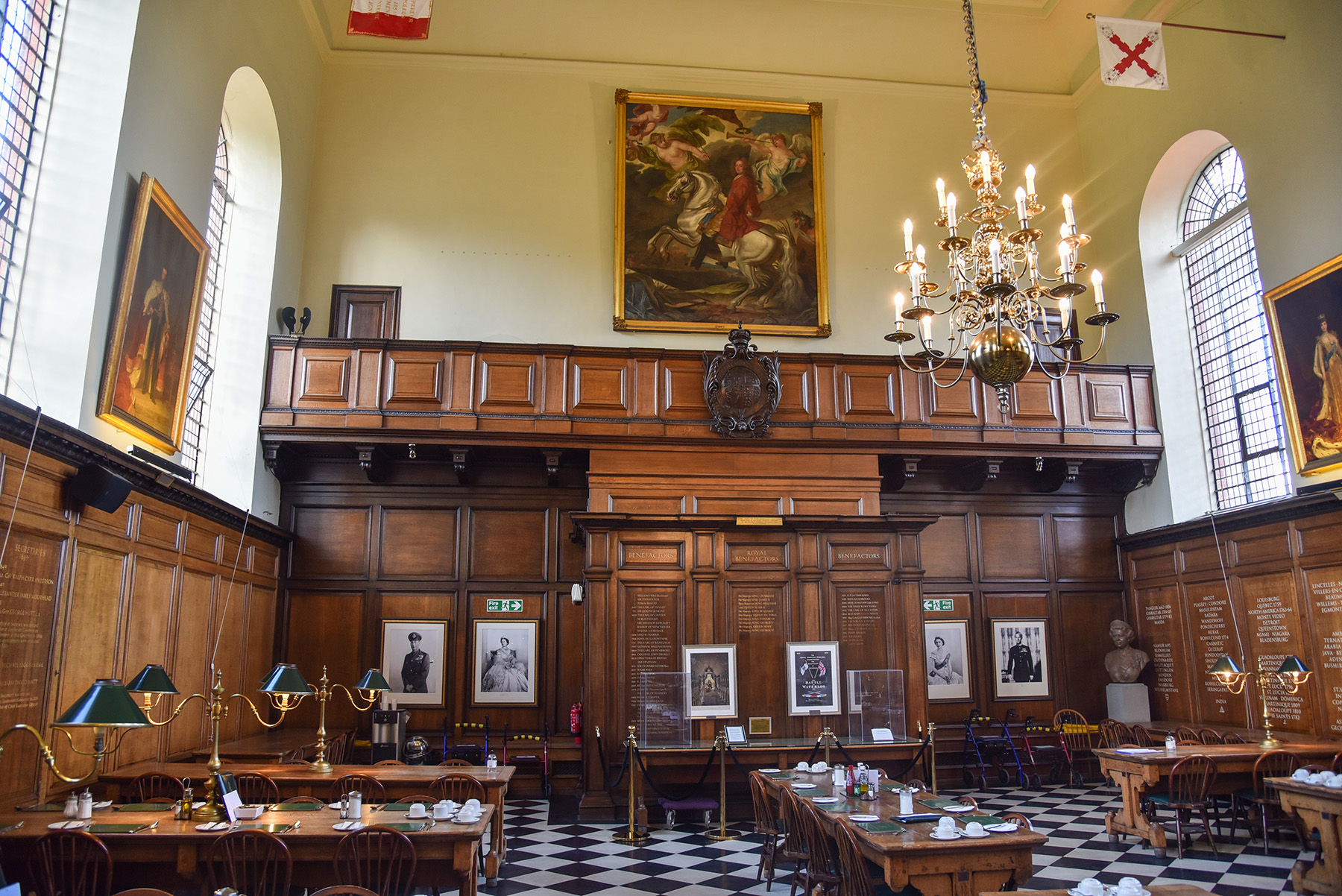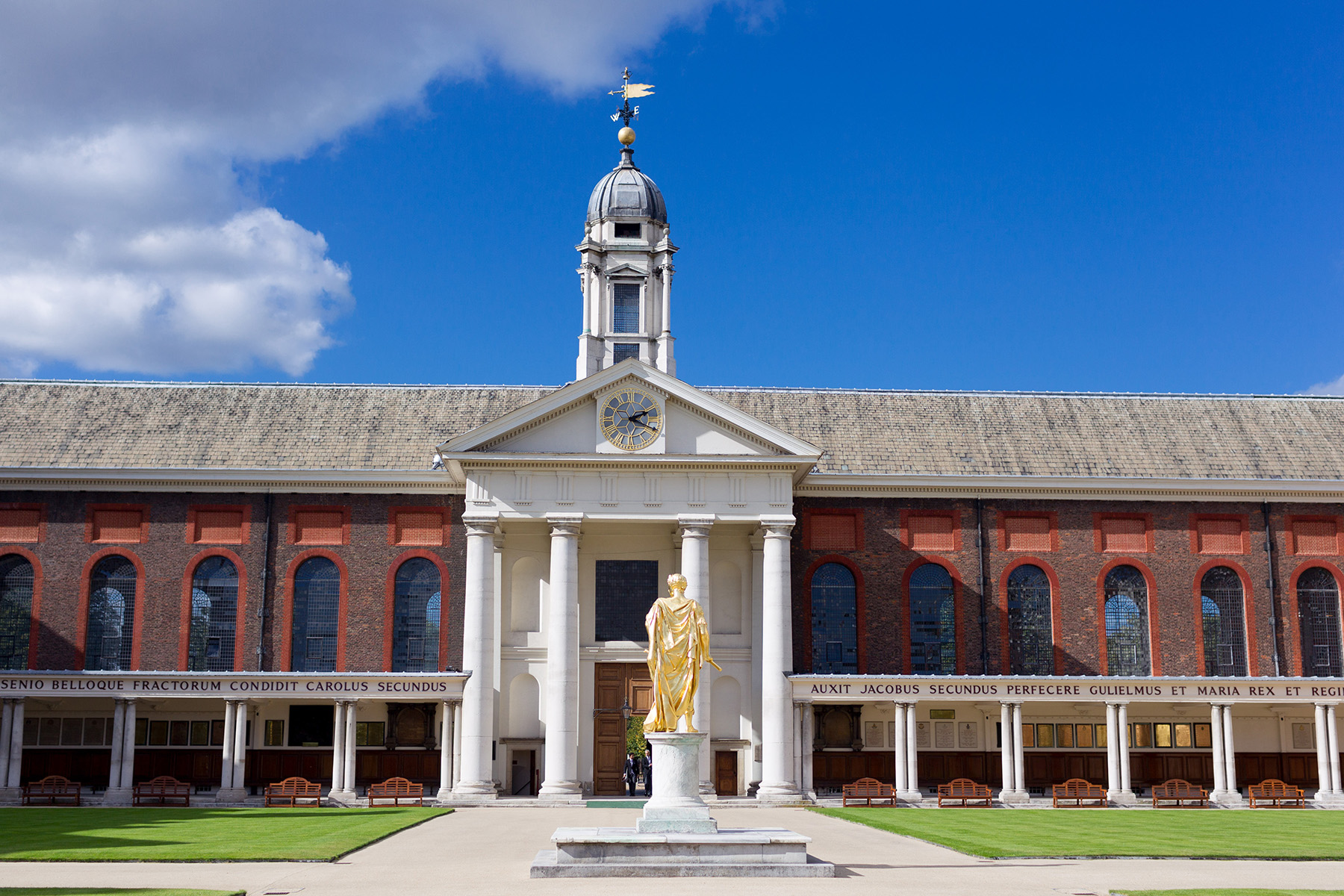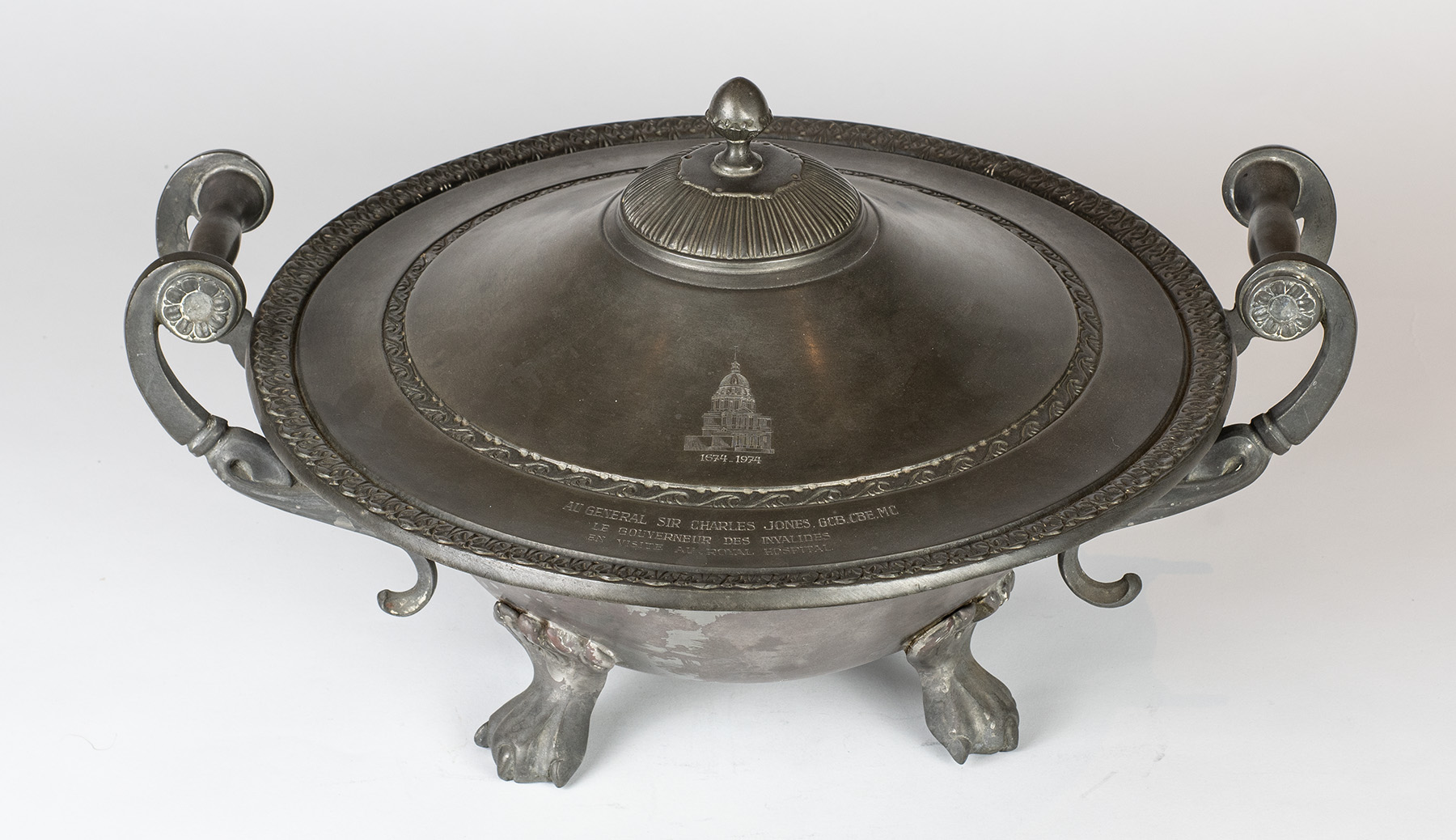Mealtime protocol
Clear instructions were set out in 1692 about the order of meal service to the Royal Hospital hierarchy. Chelsea Pensioners were to be served before the Governor and senior officers.
The Master Cook must: ‘every day between Eleven and Twelve a Clock, when the Drum beats, to begin to Dish the said Meat, Delivering out first the Dishes for the Five Tables in the Officers Hall, next those Sixteen Tables below the Steppe in the Great Hall, Next those of the Governours Table upon the Steppe ...’. The servants and other staff ate in separate dining rooms.
The Master Butler supervised the serving of meals, whilst the Usher of the Hall swept the dining halls, attended to the fires, cleaned the tables, opened the windows and extinguished the candles. The Steward’s job was to oversee the kitchen and Great Hall, before and during meals.

In 1692, the Usher was instructed ‘not to suffer strangers to come into the Hall when the Pensioners are at dinner, but if they desire to see them eat to admit them to the Gallery’. It seems visiting the Great Hall at meal times had become a popular amusement.
Dinner is served
Although the kitchen was next to the Great Hall, curiously there was no direct access between them. Food had to be carried outside along the colonnade to the entrance at the opposite end of the Hall.
It was traditional to parade the choicest food, reserved for the Governor’s table, along the length of the Great Hall past all the other diners.
It was not until 1824 that a serving hatch from the kitchen was introduced, replaced eventually by a door.

The age of pewter
Pewter has been used for decorative items and tableware in Britain since the Roman period. It is made mostly from tin alloyed with other metals such as copper.
Pewter became such an important commodity that The Worshipful Company of Pewterers was granted a charter by King Edward IV in 1474, giving them legal control over its manufacture throughout England.
Pewter became the main material used for producing plates, cups and bowls, with the trade reaching its height in the late 17th century. It was overtaken by the mass production of pottery, porcelain and glass products in the 18th century and today our association with pewter is largely limited to pint pots.
A pewter gift
This French soup tureen was presented to General Sir Charles Jones GCB CBE MC, Governor of the Royal Hospital, by his counterpart at the Hôtel National des Invalides in 1974 on the 300th anniversary of its opening. Les Invalides, in Paris, was the French equivalent of the Royal Hospital Chelsea and now houses the Musée de l’Armée, amongst other institutions.
